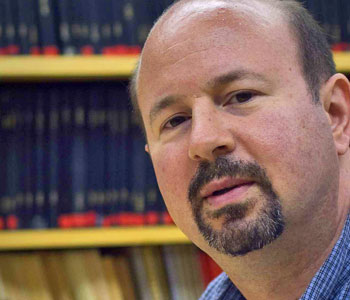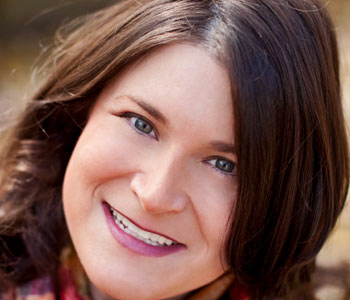Mergen, Bernard
Weather Matters: An American Cultural History since 1900
University Press of Kansas
448 pages, 6 x 9 inches
ISBN 978 070061611
Weather, as defined by meteorologists, is the state of the atmosphere as it affects life over a period of a few minutes, or at most a few days. This distinguishes weather from climate, which is the statistical information that describes the weather of a place over a long time period, usually at least thirty years. But weather and climate are much more than temperature, humidity, precipitation, visibility, and wind. For the historian, weather is greater than the sum of its parts. Weather is part of everyday life and our conversations about it. We feel anxious during a violent lightning storm. We express pleasure at the sight of a rainbow. We complain when we feel it’s too hot or too cold. Weather roots us in a place and contributes to our identities. Readers of this book will probably already be familiar with this idea, but they may be surprised by how deeply weather pervades American culture.
The revolutions in science, medicine, and technology that began to give us greater protection from the rigors of climate and weather also gave us new ways of looking at weather and talking about it. Following European precedent, the United States created a civilian weather bureau in 1891; its mission: to issue forecasts to protect agriculture and commerce. Hundreds of weather stations were established in the continental U.S. and its territories, and twice-daily observations of temperature, barometric pressure, and precipitation were telegraphed to the Weather Bureau, headquarters in Washington, DC. Here maps were prepared, showing local conditions and the general direction of winds, clouds, and potential storms. As Mr. Dooley, the fictional creation of humorist Finley Peter Dunne, remarked in 1901, there were now two kinds of weather, “human weather an’ weather bureau weather.”
Dooley nailed it, but he could not foresee the creation over the next century of many other kinds of weather and the institutions that describe them. Government weathermen were soon joined by academic meteorologists, private weather-forecasters, radio and television weather personalities, cloud watchers, skyscape artists, storm chasers, and compilers of color-coded indexes of air quality, pollen counts, and ultraviolet rays. Today, weather fanatics clamor for our attention on the Internet.

Up to 70% of all businesses are vulnerable to weather hazards. Trillions of dollars are lost annually because of storms and erroneous forecasts. Yet, Americans pay less than the price of a movie ticket annually to support the National Weather Service.
Weather Matters is a history of all these phenomena. It explores the questions why and how we talk about the weather in science, the media, popular culture, and the arts. It seeks to explain how we perceive, manage, and market the weather. It has been estimated that up to 70% of all businesses are vulnerable to weather hazards. Trillions of dollars are lost annually because of storms and erroneous forecasts. Yet, Americans pay less than the price of a movie ticket annually to support the National Weather Service. Readers of Weather Matters will learn how weather bureaucracies evolved over the past century, why the management of weather risks is difficult, and how weather remains a way of understanding nature and our place in it.
As I discovered when writing my previous book, Snow in America (Smithsonian Institution Press, 1997), histories of weather fall into three broad categories: dramatic narratives of specific storms and weather disasters, accounts of meteorological science and scientists, and institutional histories of weather services. The first category is represented by a plethora of books and magazine articles. Hurricane Katrina spawned dozens. At their best, these storm stories show their readers how weather affects a community psychologically, politically, economically, and environmentally. They provide ways of integrating weather into larger narratives of history. My books are attempts to place weather at the center of environmental and cultural history, to show that our everyday experience of sky, wind, snow and other elements of weather link us experientially and intellectually to the world around us.
We all know how weather makes us feel, but we also learn to feel some things more than others because we are told they are important by those who claim authority to speak on the subject (e.g. the color-coded indexes of temperature, pollen, pollution, and UV rays). The weather pages of many newspapers have begun to link weather and health in new ways. The American Meteorological Society, or AMS, the professional organization that represents over 12,000 atmospheric scientists, has, since its creation in 1919, been actively involved in teaching Americans how to think and talk about weather. The AMS publishes weather and climate glossaries, produces films, develops elementary and secondary school science curricula, and recently has joined in a program to encourage TV weatherpersons to become “station scientists” and explain the relationship of weather to the larger environment.
Weather has always been used metaphorically by artists and writers. From them we learn to compare our moods to atmospheric conditions and, to seek an understanding of life’s laws and accidents in the patterns and chaos of weather. Weather is, as others have observed, a kind of language that depends on both science and the arts for interpretation. My intent in this book is to illustrate why this is true and to bring the humanities and the sciences together for a deeper understanding of weather phenomena.
I hope Weather Matters is a book that can be opened to any of its many subheadings and engage the reader. The chapters are topical more than chronological, and my argument for seeing weather as a system of systems builds by separate examples rather than in a linear manner. Either the introduction chapter or the conclusion chapter will give a sense of what the book provides. Perhaps my favorite section is the one on Edward Lorenz’s work on chaos and the “butterfly effect.” The sections on weather humor, on the early efforts to interest children in the activities of the Weather Bureau, on Jack Borden’s campaign to encourage “Sky Awareness,” on poems, novels, and paintings rich in weather images, and on the intersection of everyday weather and health are also good places to begin.
Every reader experiences a book differently. Leafing through books, buying them, checking them out of a library, or reading them online requires different levels of commitment. Even a brief encounter with Weather Matters makes the reader part of the community of weather enthusiasts, taking them to a world beyond the satellite images of swirling clouds and the wind-tousled hair of on-camera weather reporters.
My personal experiences on a storm chase in the Midwest in June 2003 cover 14 pages in the final chapter. These convey, I hope, the many ironies and contradictions of weather mania. Professional storm chasing—taking paying customers on a kind of weather safari in search of tornadoes and other severe storms—began in the 1990s and has been popularized by television programs and movies such as Twister. While storm chasers can provide valuable information for public safety by reporting on storms in real-time, they are also part of disaster tourism; storm chasers are witnesses to other people’s tragedies. Viewing a lightning-streaked sky over the Great Plains is the twenty-first century’s equivalent of a nineteenth century excursion to Niagara Falls, or a twentieth century trip to the Grand Canyon. Like in those experiences of search of the sublime, the traveler must ask what such an encounter means. Has the weather tourist learned anything that will change him or her for the better?

My books are attempts to place weather at the center of environmental and cultural history, to show that our everyday experience of sky, wind, snow and other elements of weather link us experientially and intellectually to the world around us.
Putting weather into American history means recognizing that the experience of the air we breathe, the clouds we watch, and the heat we suffer are inextricably part of the ways we think and talk about nature, beauty, and risk. Humans seek to control nature, but that control is often illusory. Because the tiniest factors in initial conditions, the flap of a butterfly’s wings, can have consequences as enormous as hurricanes, weather remains chaotic and unpredictable by even the most complex computer models. The recognition and acceptance of this should make us humble. No one who watches a thunderstorm develop and climax in lightning and rain can doubt that, as the poet Wallace Stevens observed, nature has a penchant for gaudy display beyond any utilitarian purpose.
Weather Matters celebrates the aesthetics and rhetorics of weather. American weather, like America itself, is diverse and dynamic. It is an experiment in search of an hypothesis, a frontier in eternal conflict with settlement. We ignore the power of weather at our peril. I conclude with the reflection that the daily weather forecast is a call to prayer whose message is “heed our authority and the laws of nature, but expect to be surprised, and act for yourself.”




We don't put paywalls. We don't distract you with ads. We don't sell your data.
Please help to keep this running!